Memories of a monarch
Queen Elizabeth II is dead (you’ve probably heard that by now).
In among her many other regal duties, she was queen of Australia for 70 years. As a result, she’s been a part of my life for as long as I can remember. So I wanted to share some memories of her.
Featured on the coin of the realm
As a child, I guess I knew that she was our queen. She lived far away, so she wasn’t very involved - but she was queen. That was just the way the world was.
The main reason I would have noticed her at all was that I collected coins, and she was on all the Australian coins. And when I say all of them, I mean all of them. We went to decimal in 1966, more than 50 years ago, and at that time she’d already been queen for 13 years. I’d have coins with each of her official portraits - including the pre-decimal portrait.
Building stronger memories
However, my strongest memory of her is not from my childhood. Nor is it from Melbourne, my birth place and still my home town. It’s not even in Australia. Instead, it was in her homeland - the UK.
When I was in the UK as a tourist, and particularly when I was in London, the queen just felt so much more present. So much more relevant. She was the queen of Australia, and yet I needed to go to the other side of the world to really notice her. And I think that shows something.
Royal parks
It began with the royal parks: As I wandered through various parks in the Greater London area, I was surprised how many of them were Crown properties (fortunately open to us commoners).
There was Hyde Park, which I’d heard so much about. There was Kensington Gardens. Richmond Park. St James Park. Regent’s Park. And so many more.
There were rose gardens. Lakes. Fountains. A palace.
There were places of beauty, and places of peace. All part of the royal estate.
I saw deer in Richmond Park:
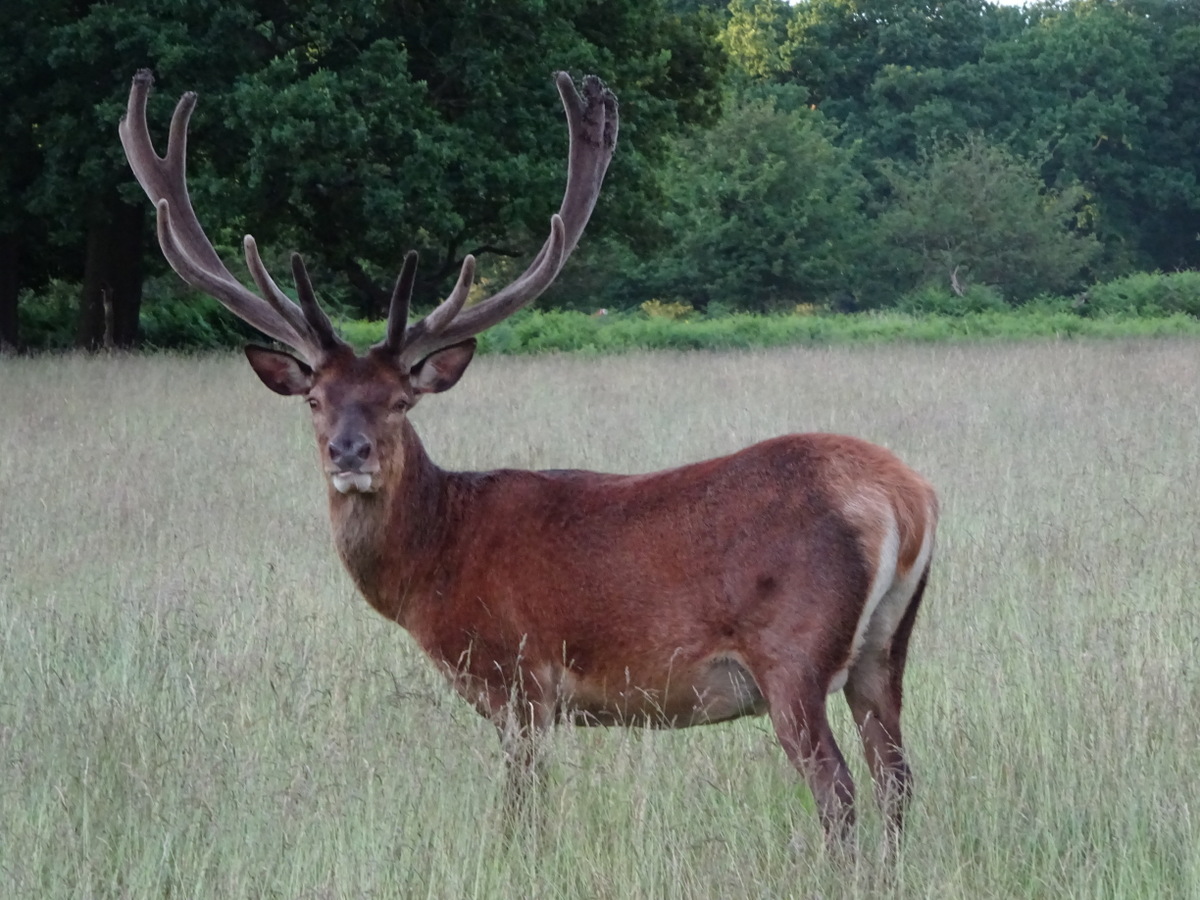
Guess they were owned by her.
Then there were the swans in Hyde Park:
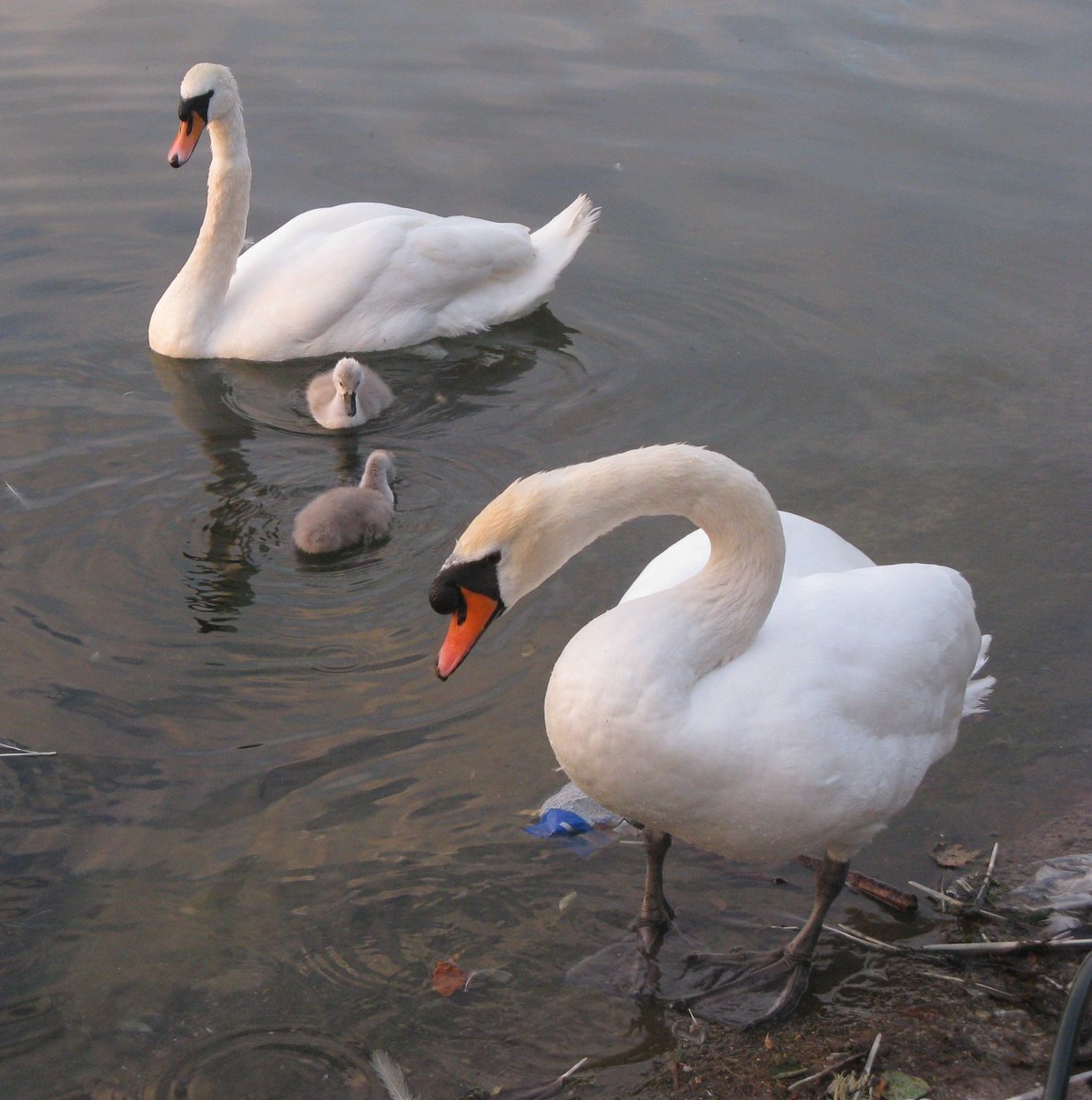
More royal property.
I even saw some black swans (descended from a long ago gift).
Castles and palaces
But it wasn’t just the gardens. I was a tourist in London - of course I went to some of the castles and palaces. I found such a sense of history there, and history that, for better or for worse, the royal family had been directly involved with and often caused.
There was Buckingham Palace, of course, known for its changing of the guard.
There was Hampton Court Palace, with its maze. A palace planned by the Lord Chancellor and taken by Henry VIII (he of the many wives). It is said that he took all six of his wives there at one time or another.
There was the Tower of London, with its famous Traitors’ Gate. The Beefeaters. The Crown Jewels. The White Tower, over 900 years old and dating back to William the Conqueror.
But I think my favourite was Windsor Castle.
Visiting Windsor Castle
It started off just another day as a tourist. Windsor Castle was just another destination to explore:
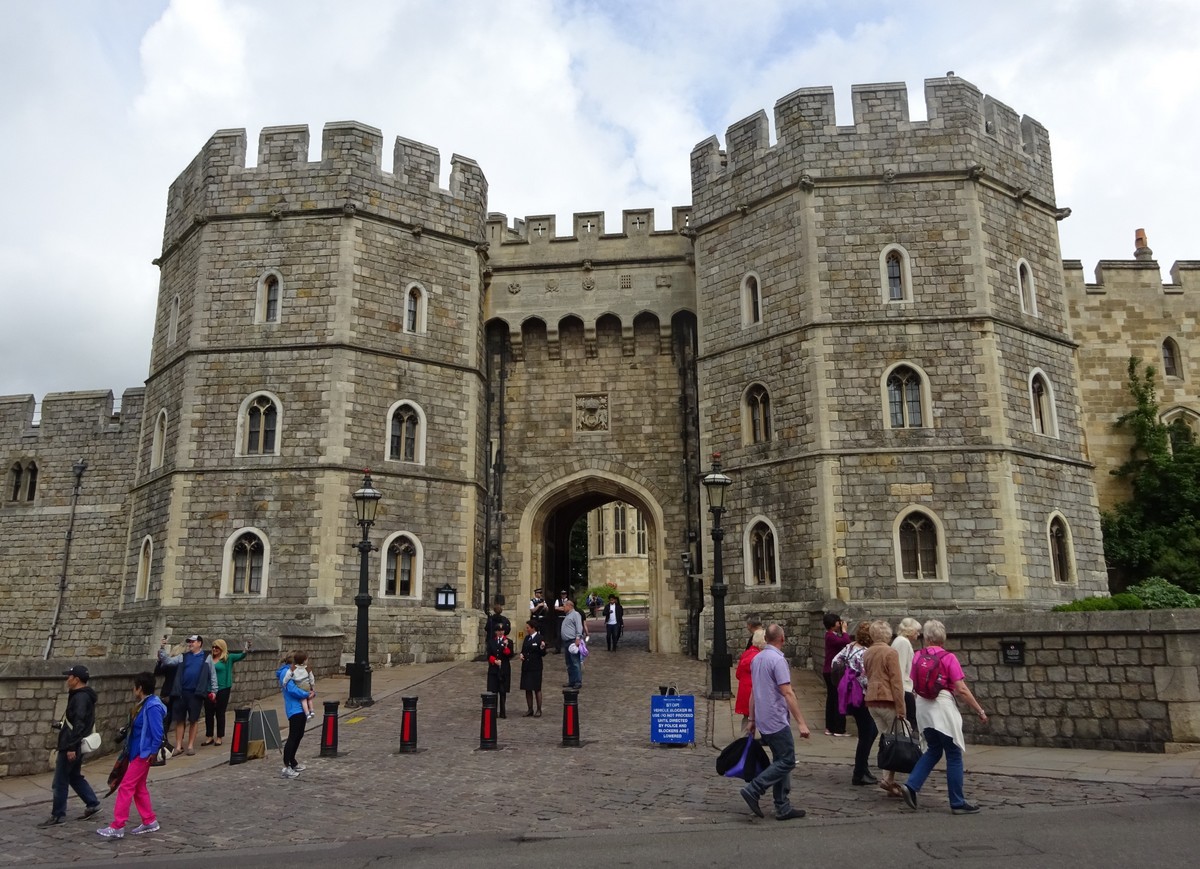
As it happened, I turned up shortly before the changing of the guard. It was fun to watch:
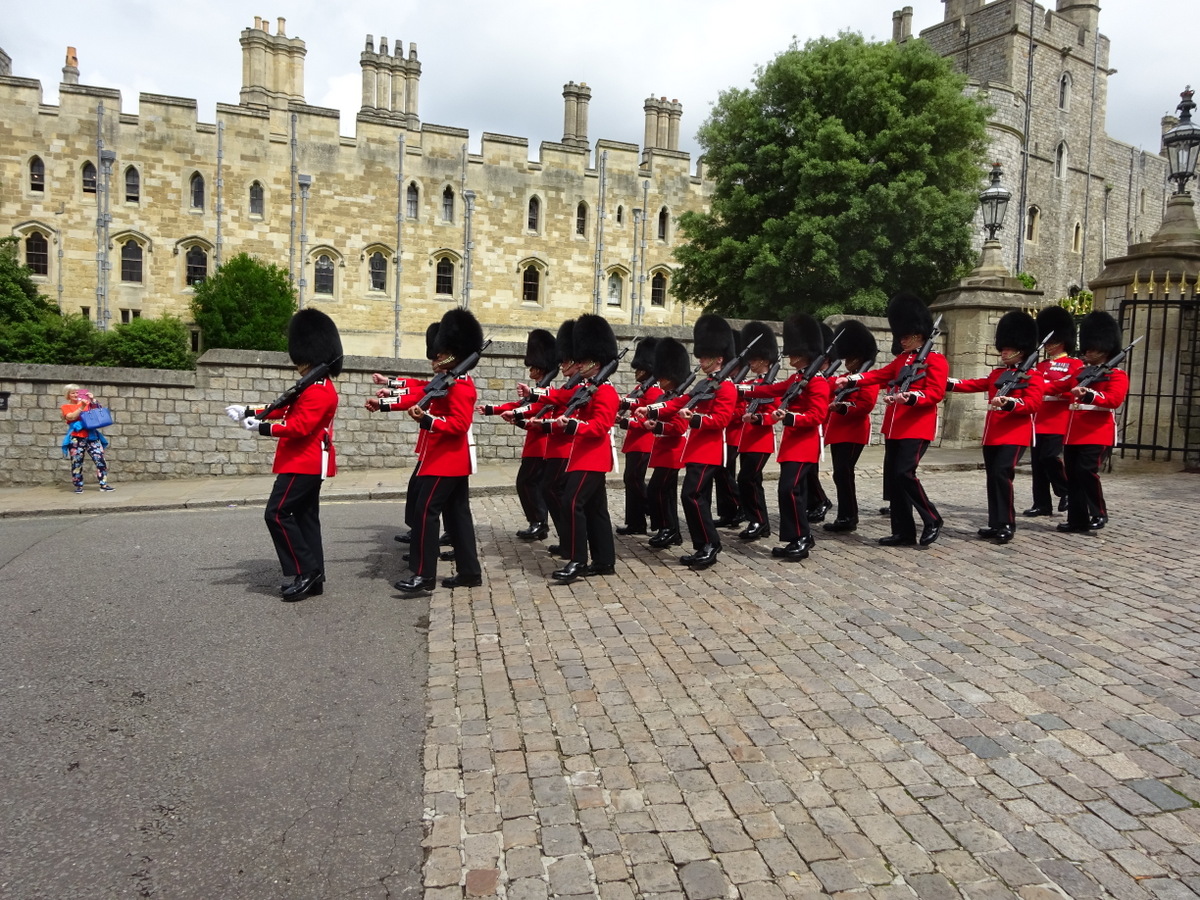
I don’t think I knew that the queen was in residence that day, though if I’d been more of a royal watcher I’d have known from the flag flying:
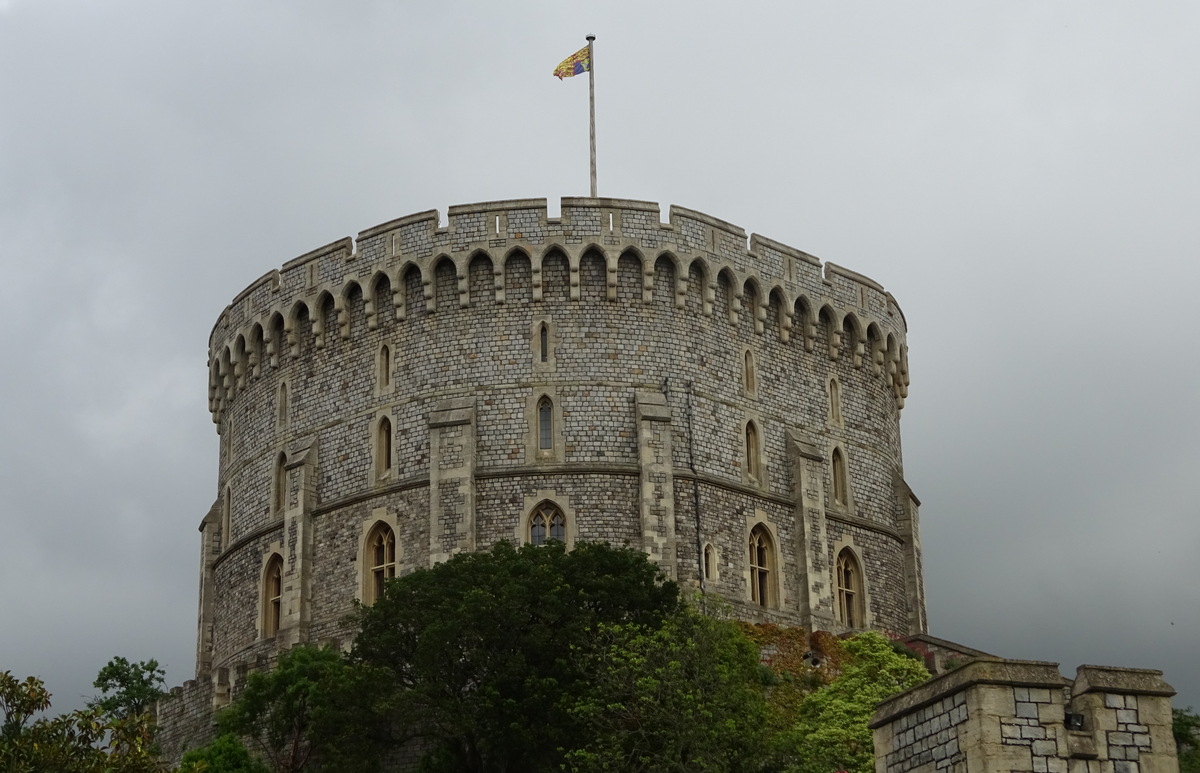
Later, when going round the State Apartments (which I really loved) there were a few rooms that were off limits because the royal family was in residence. But I’m still not sure it had really sunk in.
The royal wave
That afternoon, I was walking through the courtyard when I saw a crowd of people. I didn’t know what was going on, but headed over on general principle (if there’s a crowd of people, there’s probably something going on).
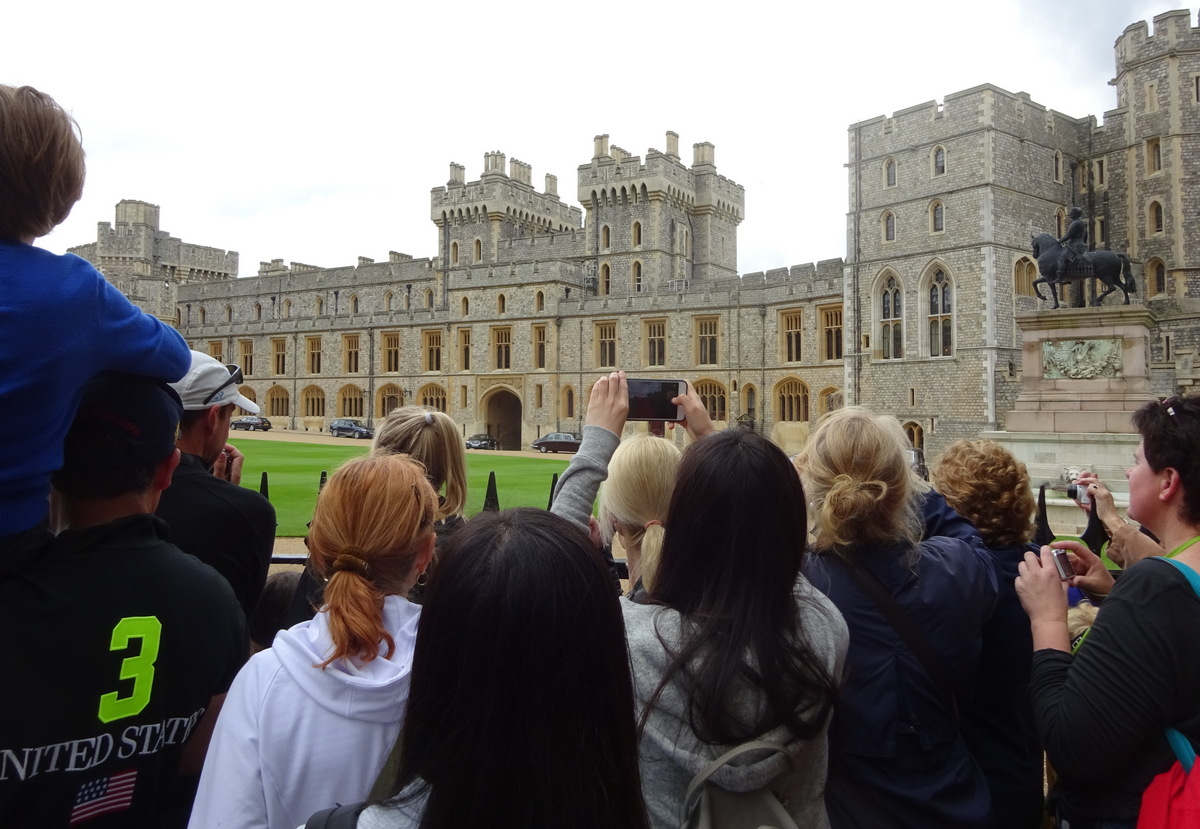
For the record, note that the only recognisable logo in that picture is the flag of a nation that rebelled against the queen’s distant ancestor and established a republic. And yes, there were lots of American tourists visiting the various royal sites - why do you ask?
Everyone was crowded round a fence. Inside the fence, there was a private courtyard, and there was a collection of cars there:
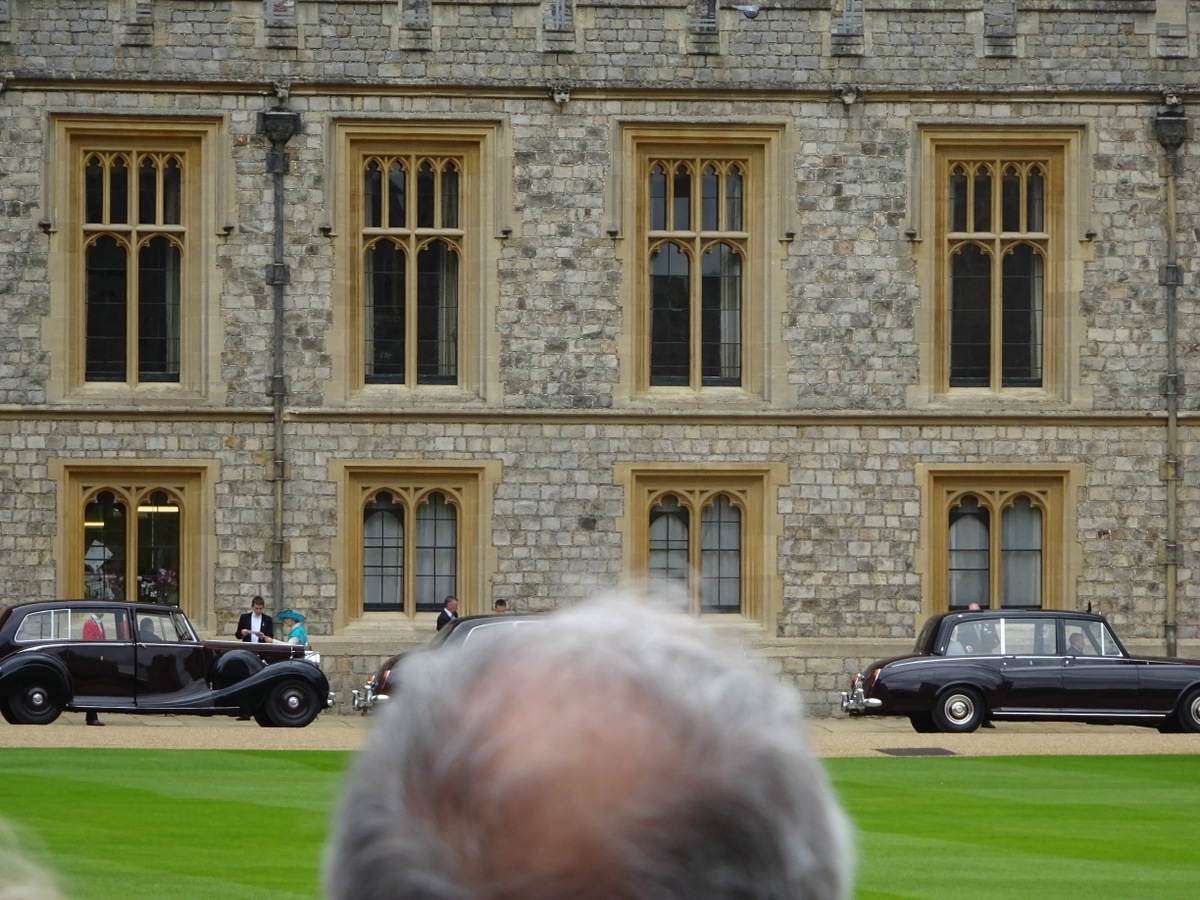
(forgive the head - since I hadn’t known what was going on in advance, I was at the back of the crowd).
From a distance we could see members of the royal family, preparing to leave. One of them was the queen, though given the distance I’m not actually sure I would have been able to pick her out without assistance. We waved frantically (well, some did, anyway). And she actually waved back.
Then the cars left:
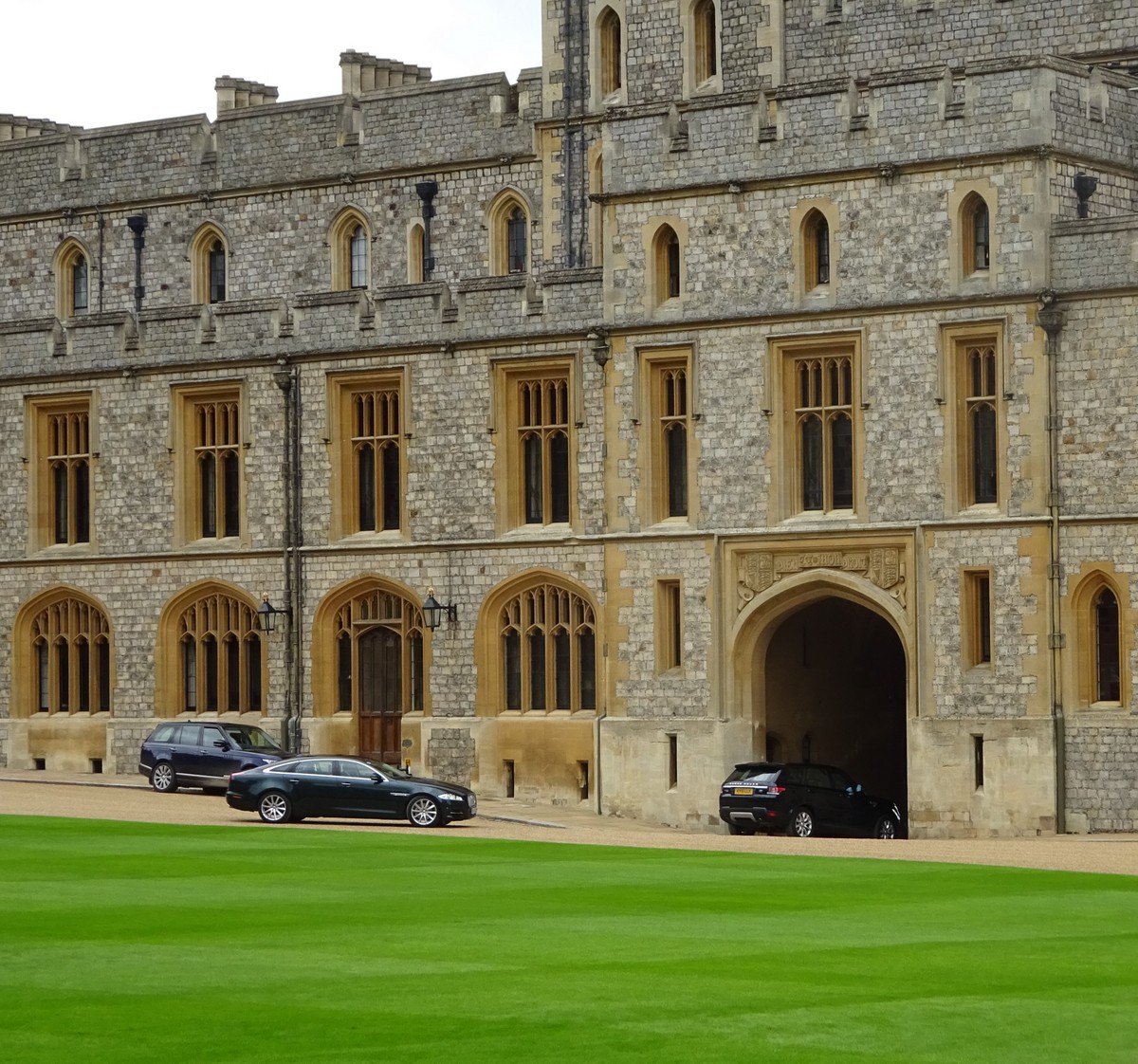
The Queen was no longer in residence.
It’s now more than six years since that event, but it’s still burned in my memory. It’s not every day that a gracious sovereign of many realms waves to you.
Perhaps it was meant to be a moment between monarch and subjects, but I don’t think it felt like it. And I think the Americans in the crowd appreciated it as much as I did.
I didn’t feel a close connection to the monarchy. If anything, that visit made me question even more why we have someone on the other side of the world officially ruling us. It still felt significant - but at a personal level, not at a governance level.
A visit to Canberra
2016 was a busy year for me. Not only did I visit the UK (and politely wave to my monarch 😉), but I also visited Canberra for the first time. One of the places I visited was Parliament House:
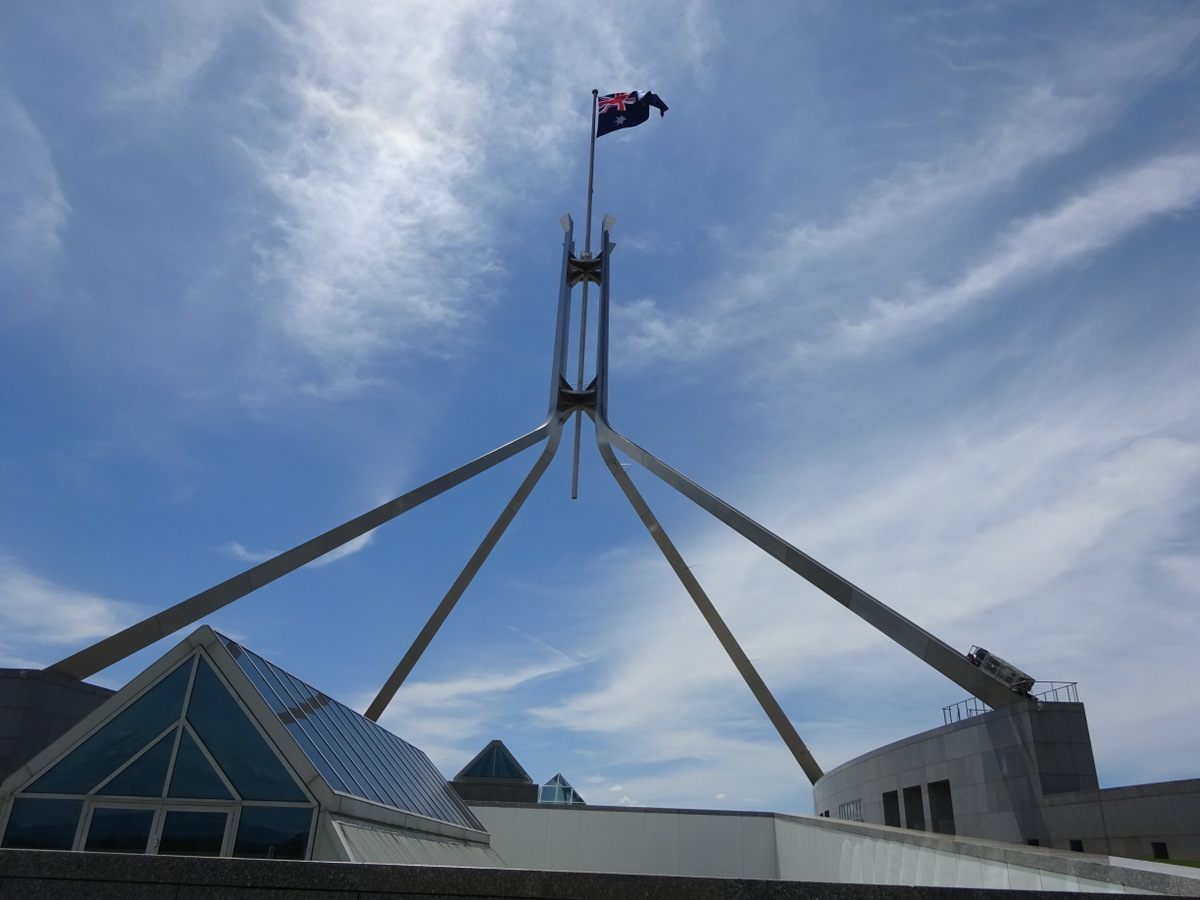
Here government felt real: Laws were being debated and decisions made that would have a direct impact on the country. For the record, the debate in the House of Representatives was over changes to voting laws - intended to make it more difficult for minority parties to be elected to the Senate. It doesn’t get much more real than that.
But the queen was also there. Well, OK, a statue of her:
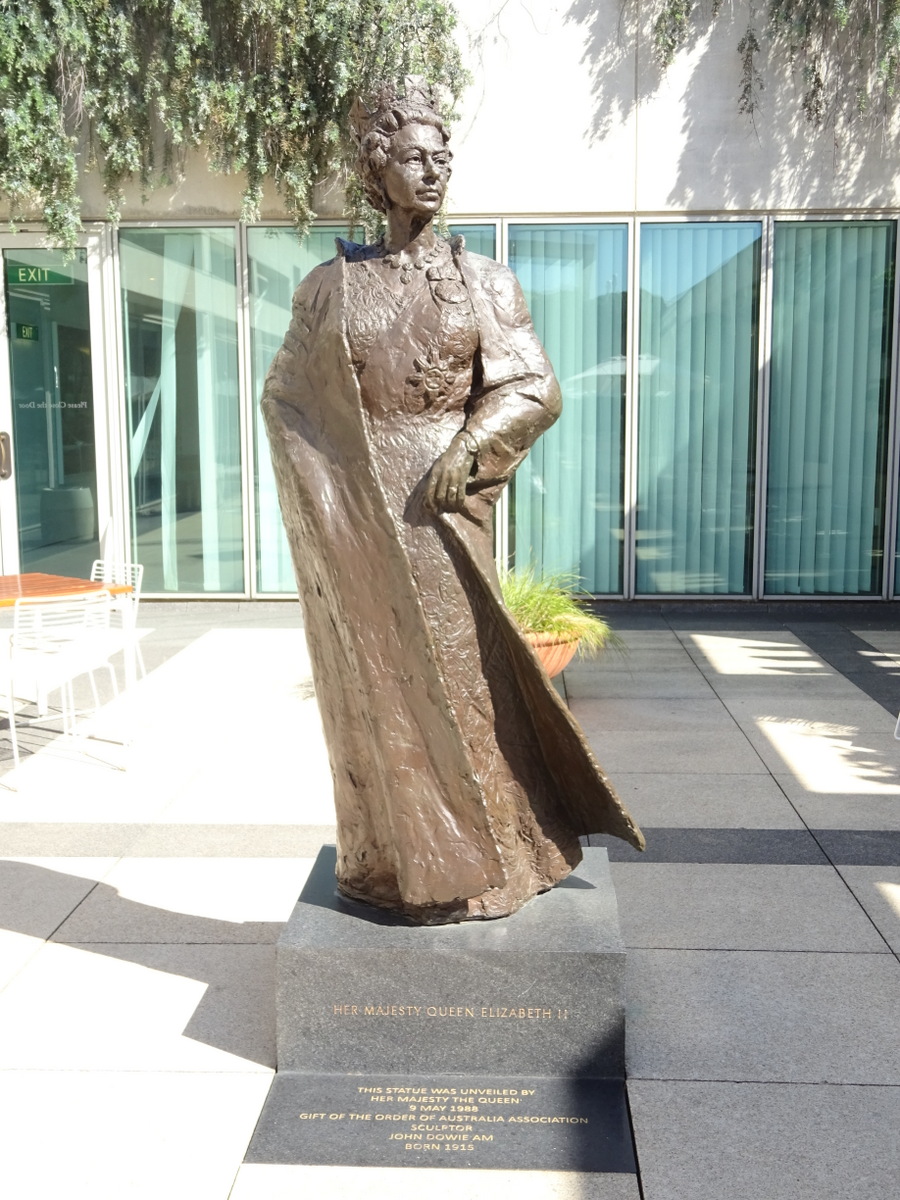
In case you can’t read the inscription, here’s the relevant part:
This statue was unveiled by Her Majesty the Queen
9 May 1988
She visited then expressly for her to open the new Parliament House. As it happens, her father had opened the old Parliament House. 61 years earlier, and before he was next in line for the throne.
I liked the statue, but to me her presence felt at best symbolic. I knew that it was the elected Parliament that did the real work. While she doesn’t even do most of the ceremonial work.
The monarch appoints a Governor-General as representative (a role that’s written into the Australian Constitution). But the convention now is that the monarch accepts the recommendation of the then serving (and elected) Prime Minister. Which also means that the Governor-General is typically a well known Australian public figure, and will live in Australia. I’m not sure they get statues in Parliament House, but they too have a much more direct connection to Australia than our UK-based monarch.
And a little closer to home
As well as the Governor-General, the individual states have Governors. These governors are similarly ceremonial heads of state, and representatives of the monarch (just dealing with state-level business rather than federal-level business).
The Governor of Victoria lives in Government House in Melbourne. It’s opened to the public a couple of times a year, and I’ve visited it a few times. Some parts of the interior reminded me strongly of Windsor Castle, actually.
The current governor has said that one of the perks of the job is being able to choose paintings from the National Gallery of Victoria collection to hang on the walls. That includes paintings of various royals, which of course included Queen Elizabeth:
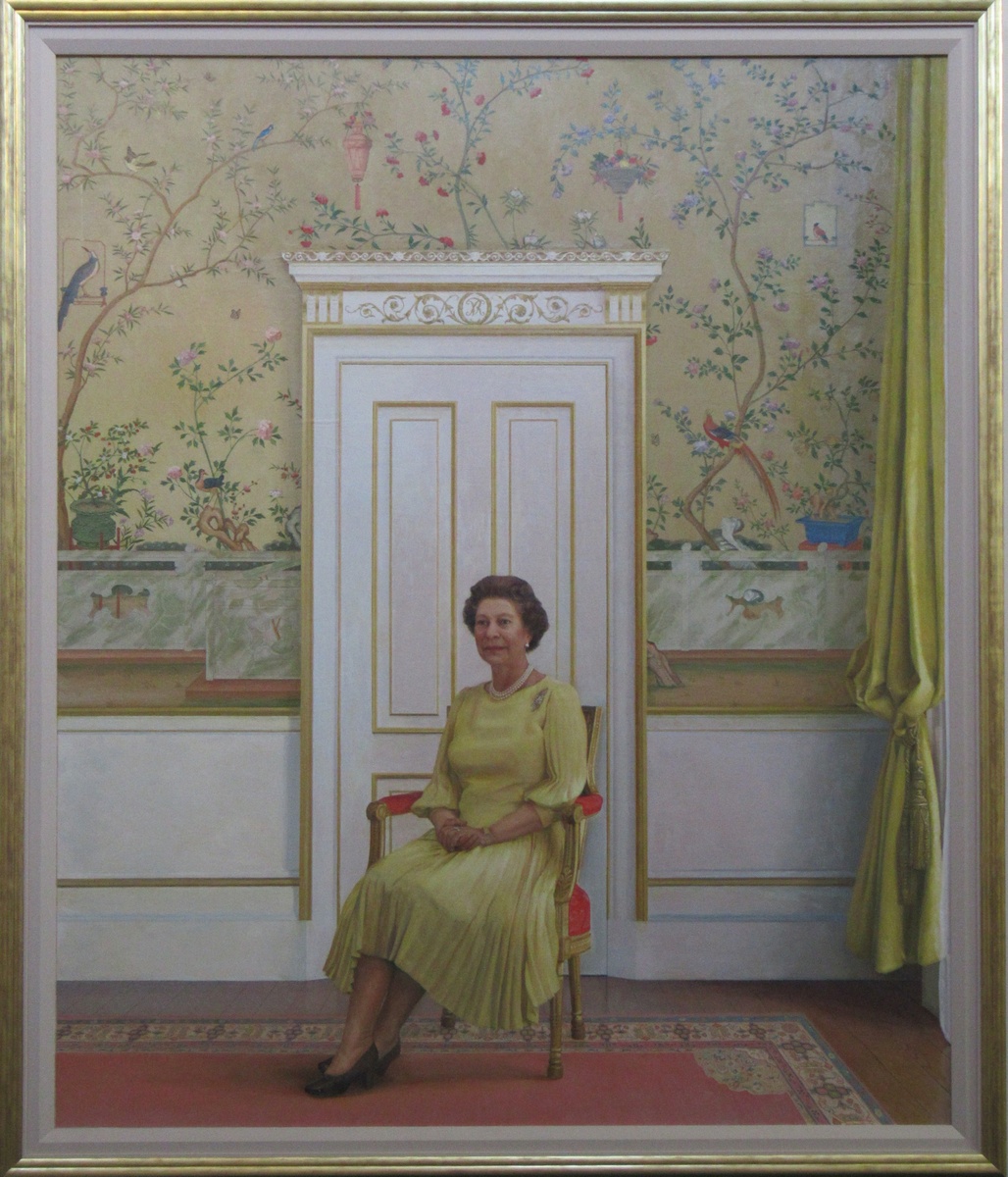
I don’t know whether that’s going to change or not.
Three generations of memories
Stepping back a little, one of the interesting things about having a queen reigning as long as Elizabeth did was how she could span eras and affect multiple generations.
My grandmother talks about the royal visit in 1954. The procession went past her workplace, so they were able to reserve prime spots. The crowds were huge, and it was exciting.
As for my parents, like me she was the only monarch they had ever known. What’s more, they grew up singing God Save the Queen as the anthem at school (I’m from the Advance Australia Fair era). And my father and his brothers wrote to the queen once, and got a response from one of her ladies in waiting.
Earlier this year, my brother’s choir was one of many across the Commonwealth singing a song composed for the queen’s jubilee celebrations (their video). It sounded like an interesting experience, though I don’t think it turned him into an ardent monarchist.
The memories I don’t have
I think it’s important to remember not just the memories I did have, but the memories I didn’t. The queen always felt a distant figure. I had a vague feeling that there had been a royal visit in my lifetime, but didn’t really remember it.
Looking it up, though, I was surprised to find that she’d actually visited Australia sixteen times. The visit in 1954 I mentioned was our first ever visit from a sitting monarch, then she repeated it another fifteen times for good measure. It seems like nine of those visits included Melbourne, and three of the visits to Melbourne were in my lifetime. But they clearly didn’t make an impression on me.
Take for example her visit to open the Commonwealth Games in 2006. I definitely remember having the Commonwealth Games here. And I guess it makes sense for her, as Head of the Commonwealth, to officially open them. But I have no memory of her being here.
I don’t have memories of an active, involved Queen of Australia. Instead, my memories are of coinage. Of statues. Of portraits. Ceremonial things.
The one really meaningful experience was that time I was on the other side of the world and on holiday. It wasn’t in Australia, and it didn’t feel like a part of “real life”. It was also an experience I shared with both subjects and non-subjects alike. I treasure it, but it doesn’t somehow make her more relevant to me or to Australia.
Conclusion
I’ve long intended to share that Windsor Castle story - perhaps it’s sad that it took her death to make it happen, but hopefully it was interesting.
Queen Elizabeth was much loved, and for good reason (well, as far as I can tell from the little I know of her). She promised service as part of her Coronation oaths*, and as far as I can tell took that promise very seriously. Yes, she lived a life of privilege, but she also lived a life of service. More than anyone in her position would have needed to. She fulfilled the role that she was born to and brought up for - even though at her birth few would have expected her to become queen.
When I started writing, it turned out that I had more memories of her than I realised. But to me those memories show her irrelevance - not just to me and my life, but to Australia in general. She was symbolically important to many, perhaps, but in practice irrelevant.
Yes, I know the history that brought us here, but I’m really not sure why she was my queen. And I’d probably thought that before, but it was that experience in England that really crystallised that for me.
* True story: I had a sermon that started off with her coronation. It was interesting reading about it - but it felt like it was from a different era.